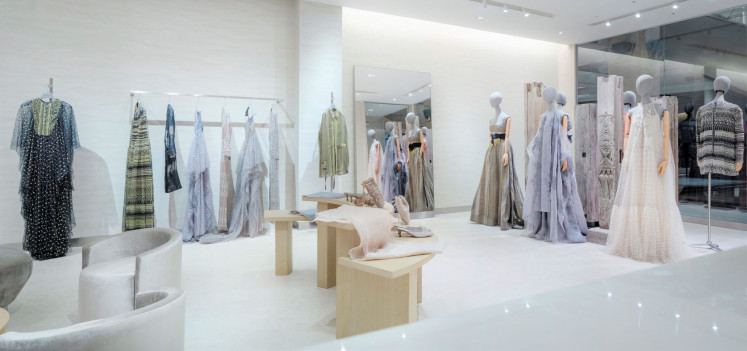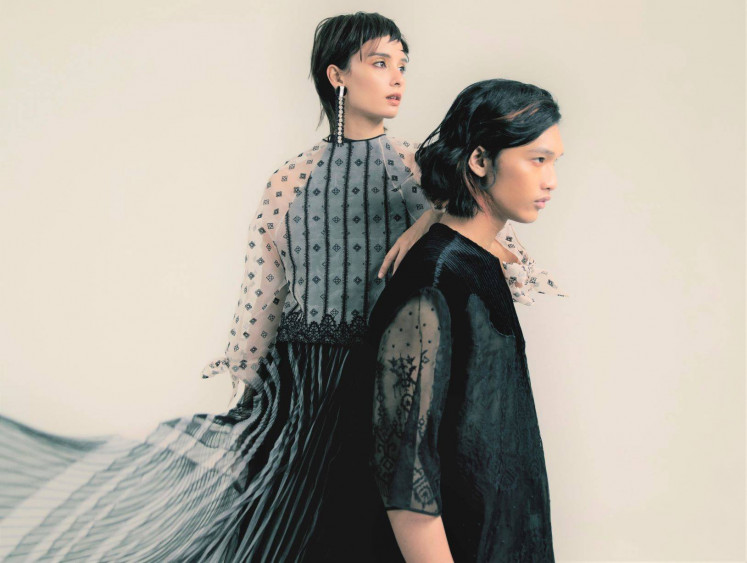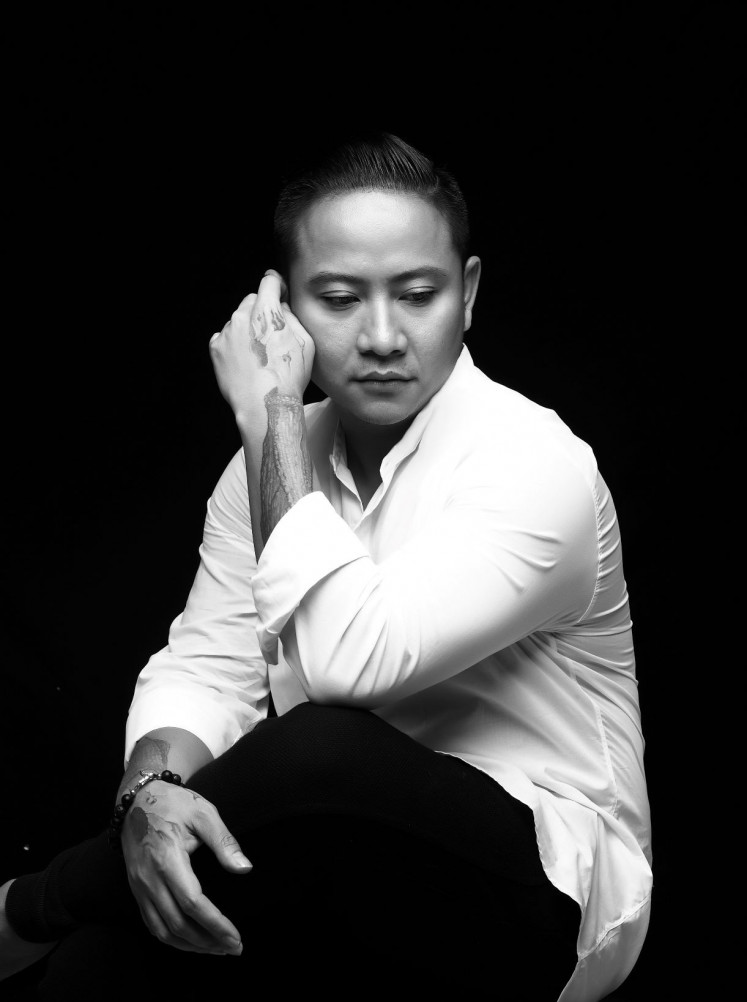Popular Reads
Top Results
Can't find what you're looking for?
View all search resultsPopular Reads
Top Results
Can't find what you're looking for?
View all search resultsFashion journey: Sapto Djojokartiko balances couture and commercial
From his humble beginnings as a young boy with big dreams in Surakarta, Central Java, designer Sapto Djojokartiko has finally cemented his status as one of Indonesia’s top-tier names in the fashion industry.
Change text size
Gift Premium Articles
to Anyone
E
very fashionista in Indonesia is familiar with Sapto Djojokartiko, the up-and-coming young designer who burst onto the scene in 2007 and quickly made a name for himself with his ethereal creations and celebrity clients.
Sapto, whose journey started with a scholarship for the fashion school ESMOD Jakarta in 1997, had just released his latest collection for the Fall/Winter 2020 season.
The collection, he said, was inspired by the works of Austrian painter Egon Schiele, who is the protégé of art nouveau painter Gustav Klimt.
“He sees things differently, or so to speak,” he told The Jakarta Post before the collection’s press reveal.
“Something that is said to be ugly, he turned into a work that, in my opinion, speaks to the emotions. From there, we explored the ideas in the collection.”
Beyond the inspiration, Sapto revealed his wish to return to his roots of combining the artistic and the commercial as shown through the opening of his first brick-and-mortar store in Plaza Senayan shopping mall in South Jakarta on March 11, putting him side by side with European luxury brands like Fendi and Gucci.
The new collection’s preview was held inside the store, a break from the traditional method of holding elaborate fashion shows.
Milestone: Sapto Djojokartiko’s new store in Plaza Senayan mall, South Jakarta, places him side by side with renowned brands like Fendi and Gucci. (Courtesy of Sapto Djojokartiko/-)Sapto said his brand has committed itself to holding fashion presentations biannually, one for each season. However, setting up the store required a considerable amount of energy, which made him decide to stage a minimalist in-store preview for the media.
“I said to my team, the collection will still be produced as we have committed to that, but at the same time, we don’t want to push the store’s opening aside.”
The commercial side of fashion is still what drove most of Sapto’s designs. He told his team the clothes must be commercial, meaning that they are wearable first and foremost, even though they can be described as artistic.
“The discussion is always about what people expect from Sapto [the label]. Every season, we will create a collection that has our signature colors, as they are the ones people often ask about whenever they are absent from a line,” he said.
Intricate: Sapto Djojokartiko's latest collection may be based on womenswear, but it is meant to be worn by anyone who identifies with the style. (Courtesy of Sapto Djojokartiko/-)Ever a realist, Sapto recognizes the importance of a brand’s sustainability, as it is a business at the end of the day.
When asked about balancing couture-like idealism and having something that will fly off the shelves, he noted it comes naturally with the job as he grows by the season.
“We have lots of textures and details in each creation, but the key is in how we can translate them into something wearable. It’s challenging at first, like 80 percent idealism and 20 percent commercial, but we learn things on the go as we can get insights on what sells.”
Sapto revealed he does not have the image of the ideal Sapto Djojokartiko consumer.
“I don’t want to say my clothes are meant for a specific demographic and style, I just don’t want to limit them,” he said. “Once you go into retail and select what you want to put on, then it’s a matter of how you relate to the garment.”
Sapto Djojokartiko (Courtesy of Sapto Djojokartiko/-)With 13 years under his belt, Sapto finds his journey is a process, starting from made-to-order clothes to finally having his own store in an upscale mall.
In fact, he considers the store’s opening as just one step in the journey as a continuously evolving brand.
“From our beginnings as made-to-measure bespoke orders, we slowly braved ourselves in creating our own ready-to-wear line. It also took a long time for us to break into retail and then finding our own formula to sell.
“After that, we felt that it was time for us to hold our own presentations for every season. The inevitable comes: ‘what’s next, Sapto?’”
It is one of the questions asked after each presentation has concluded, but it seems that Sapto has his own answer ready.
“We want people to have their own Sapto experience,” he said. “Back then, if you want to see a runway piece, you’ll have to come to the studio. We want to simplify that and gain a more direct feedback, as we don’t want the store to be just a place where you buy clothes.”
Even so, he remains a humble figure, declining to name one particular season over the last decade or so as his personal masterpiece despite all of his accolades.
“Each season has its own story, but I never once felt that one particular collection is special in a way. The point is, we just always try to bring something new to the table each season, something that tells its own story.” (ste)














